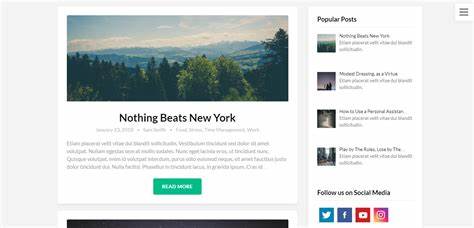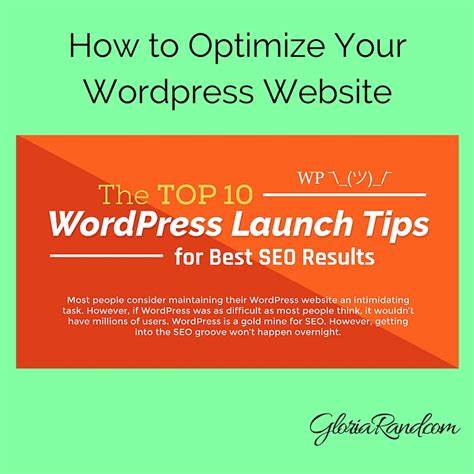Table of Contents
Introduction of Side-bar:
Sidebar is a vertical column on a website that typically appears on either the left or right-hand side of the main content area. It’s an important element of website design that can greatly impact the user experience and the SEO of the website.
It provides additional navigation options for users and can be used to showcase important information such as recent posts, categories, and social media buttons. Optimizing your WordPress Sidebar is an essential step in enhancing the functionality and design of your website.

Use of sidebar:
It is a useful element in website design that serves a variety of purposes. Here are some of the main uses of a It:
- Navigation: It provides additional navigation options for users, which can improve the overall user experience of your website. By including links to important pages, such as the About Us page, Contact Us page, and your most popular posts, users can easily find what they’re looking for.
- Widgets: Widgets are an essential part of It and can be used to add different features to your website, such as social media buttons, recent posts, and categories. Widgets can enhance the functionality of your Sidebar and improve the user experience on your website.
- Ads: It can be used to display ads, which can generate revenue for your website. By including ads that are relevant to your audience, you can monetize your website and earn additional income.
- Related content: It can be used to display related content, such as articles or blog posts, that are relevant to the main content on the page. This can keep users engaged and encourage them to explore more of your website.
- Call to action: It can also be used to display a call to action, such as signing up for a newsletter or following your social media channels. By including a call to action in your Sidebar, you can encourage users to take a specific action that benefits your website.
Overall, It is a versatile element in website design that can be used for a variety of purposes. By using It effectively, you can improve the user experience of your website and achieve your website goals.

Advantage and disadvantage of sidebar
Advantages of Sidebar in WordPress:
- Improved navigation: It can help users navigate your website more easily by providing additional links and options for them to explore. This can help increase user engagement and keep users on your website for longer periods of time.
- Increased functionality: With the use of widgets, It can be used to add additional features and functionality to your website, such as social media buttons, recent posts, and contact forms. This can improve the overall user experience and make your website more user-friendly.
- Monetization: It can be used to display ads, which can generate revenue for your website. By displaying relevant ads, you can monetize your website and earn additional income.
- Promote related content: It can be used to promote related content, such as articles or blog posts, that are relevant to the main content on the page. This can help keep users engaged and encourage them to explore more of your website.
- Call to action: It can be used to display a call to action, such as signing up for a newsletter or following your social media channels. By including a call to action in your Sidebar, you can encourage users to take a specific action that benefits your website.
Disadvantages of Sidebar in WordPress:
- Cluttered design: A poorly designed Sidebar with too many links, widgets, and other elements can make your website look cluttered and overwhelming. This can negatively impact the user experience and make it difficult for users to find what they’re looking for.
- Mobile responsiveness: It can cause problems with mobile responsiveness, as it can take up a significant portion of the screen on smaller devices. This can result in a poor user experience on mobile devices, which can negatively impact your website’s search engine rankings.
- Slow loading time: If it is not optimized properly, it can slow down the loading time of your website. This can negatively impact the user experience and result in a higher bounce rate, which can also impact your search engine rankings.
- Unnecessary elements: Including unnecessary elements in your Sidebar, such as outdated content or irrelevant widgets, can make your website look unprofessional and cluttered. This can negatively impact the user experience and make it difficult for users to find what they’re looking for.
- SEO concerns: The use of too many links in your Sidebar can negatively impact your website’s search engine rankings. Search engines may see your website as spammy or manipulative if it includes too many links in the Sidebar. It’s important to use links in your Sidebar strategically and only include links that are relevant and helpful to users.
Overall, It is a useful element in website design that can enhance the user experience and improve the functionality of your website. However, it’s important to use it strategically and avoid including unnecessary elements that can negatively impact the user experience and search engine rankings.
When it comes to designing and optimizing a WordPress website, one area that is often overlooked is the Sidebar. It is an important element of your website that can greatly impact the user experience and SEO of your site. In this article, we’ll discuss how to optimize your WordPress Sidebar for better user experience and SEO.
- Choose the right Sidebar layout
The first step in optimizing your WordPress Sidebar is to choose the right layout. WordPress offers different Sidebar layouts such as left, right, or full-width Sidebar. Choose a layout that best suits your website design and content. A right Sidebar is the most common layout and is a good option for blogs or news websites. Left Sidebar is also a popular choice for websites that use a lot of visuals.
- Use Widgets to enhance functionality
Widgets are an essential part of WordPress Sidebar. They allow you to add different features to your Sidebar, such as social media buttons, search bar, recent posts, and categories. Widgets can enhance the functionality of your Sidebar and improve the user experience on your website. However, it’s important to not go overboard with too many widgets, which can clutter your Sidebar and make it difficult to navigate.
- Keep it simple and organized
A cluttered Sidebar can be overwhelming for users, which can lead to a poor user experience. To ensure that your bar is easy to navigate, keep it simple and organized. Categorize your widgets and use headings to make it easy for users to find what they’re looking for. Use a consistent font and color scheme to create a cohesive look.
- Optimize for SEO
Optimizing your Side-bar for SEO can improve your website’s visibility on search engines. Include keywords in your headings and content to make it easy for search engines to understand the purpose of your Side-bar. Use anchor text to link to other pages on your website, which can improve the internal linking structure of your site. Avoid using too many links in your Sidebar, which can be considered as spammy by search engines.
- Add navigation links
Adding navigation links to your Side-bar can improve the user experience on your website. Include links to important pages such as the About Us page, Contact Us page, and your most popular posts. This can make it easy for users to find what they’re looking for, which can increase engagement on your website.
- Optimize for mobile devices
More than half of internet traffic comes from mobile devices, which means that it’s important to optimize your Sidebar for mobile users. Choose a responsive Sidebar that adjusts to different screen sizes. Use a mobile-friendly layout that is easy to navigate on a small screen.

In conclusion,
It is an important element of website design that can greatly impact the user experience and SEO of your website. A well-designed Sidebar can improve the navigation and functionality of your website, while a poorly designed one can make it difficult for users to find what they’re looking for and negatively impact your search engine rankings.
By using it strategically and including relevant links, widgets, and other elements, you can enhance the user experience and achieve your website goals. It’s important to keep the design of your Sidebar clean and organized, and avoid including unnecessary elements that can clutter your website and negatively impact the user experience.
Optimizing your Sidebar for mobile responsiveness and fast loading time is also essential, as more users are accessing websites on mobile devices than ever before. Additionally, including a call to action in your Sidebar can encourage users to take a specific action that benefits your website, such as signing up for a newsletter or following your social media channels.
Overall, It is a versatile element in website design that can be used for a variety of purposes, including navigation, functionality, monetization, and promoting related content. By using It effectively, you can enhance the user experience of your website and achieve your website goals.

